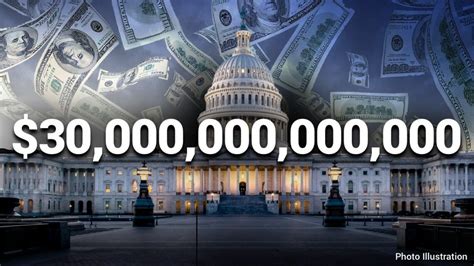
A U.S. fiscal crisis would happen incredibly quickly — and there’s no way to predict when, says head of budget watchdog
Story by Greg Robb
What is a level of U.S. debt that financial markets think is too large?
The answer is “we have no idea” because it will depend on what is going on around the world and where else investors could park their money, said Maya MacGuineas, the president of the Committee for a Responsible Federal Budget, a nonpartisan budget watchdog.
“When you look at the fiscal situation structurally, clearly it is unsound. The definition of unsustainable is if your debt is growing faster than your economy. Ours is forever,” MacGuineas said Wednesday at a discussion at the Institute for International Finance.
Many people in financial markets liken the U.S. fiscal position to a bubble, she said. But there’s a lot of money to be made while the bubble persists. And being able to time a crisis is impossible, MacGuineas said.
“So, if you’re in the markets, you’re going to be unwise to bet on a fiscal crisis until it starts,” MacGuineas said. “And then my assumption is it would happen incredibly quickly, a Treasury auction that goes bad, depending on what the responses are, things could go incredibly quickly.”
Talk of a potential fiscal crisis has picked up on Wall Street. Earlier this week, legendary investor Paul Tudor Jones said he was worried about a potential reckoning over a burgeoning U.S. debt pile.
Even without the threat of a crisis, the U.S. debt level is damaging the economy, holding down growth and limiting the country’s ability to help those in need, MacGuineas said. Her group opposes large federal deficits.
In its latest report, released Wednesday, the International Monetary Fund said the U.S. needed to adjust its spending and borrowing but downplayed talk of a crisis.
“The situation is sustainable,” Victor Gaspar, director of the fiscal-affairs department at the IMF said in a press conference on Wednesday.
He said U.S. policymakers “have access to many combinations of policy instruments that enable them to put the path of public debt under control and they will do that at the time, and with the composition of their choosing.”
The close and divisive U.S. presidential election campaign has experts worried.
Raghuram Rajan, former governor of the Bank of India and now a professor of finance at the Chicago Booth School of Business, asked whether the increasingly fractionalized politics in the U.S. would make progress on the budget deficit unlikely.
When politics are not cohesive, then both sides only look to help their constituents. “So, spending goes up and revenues go down,” Rajan said at a separate IIF panel discussion.
During her talk, MacGuineas said politics on fiscal sustainability in the U.S. “are terrible” at the moment. “It’s not just that Republicans want tax cuts and Democrats want spending. They both want both,” she said. It is “political suicide” to advocate deficit reduction, she added.
Already, there is growing pressure to raise defense spending, and this will likely pass Congress, she said.
Benchmark rates that help finance the U.S. economy have been rising since mid-September, when the Federal Reserve cut rates for the first time in four years. A soft-landing scenario for the economy has been a big driver, helping push 10-year Treasury yields up. But lately so have jitters about what November’s election could mean for deficit spending.

Comments (0)